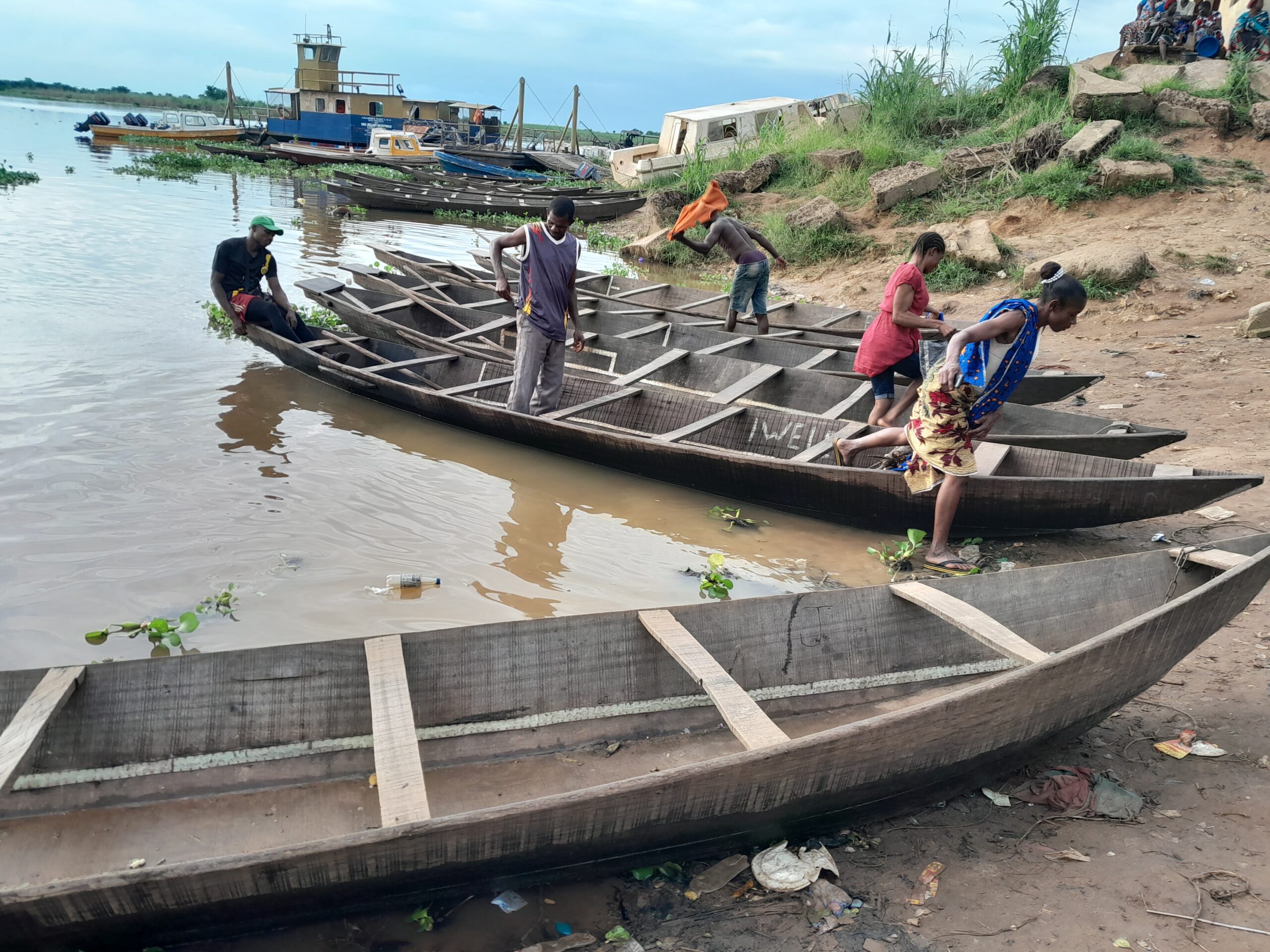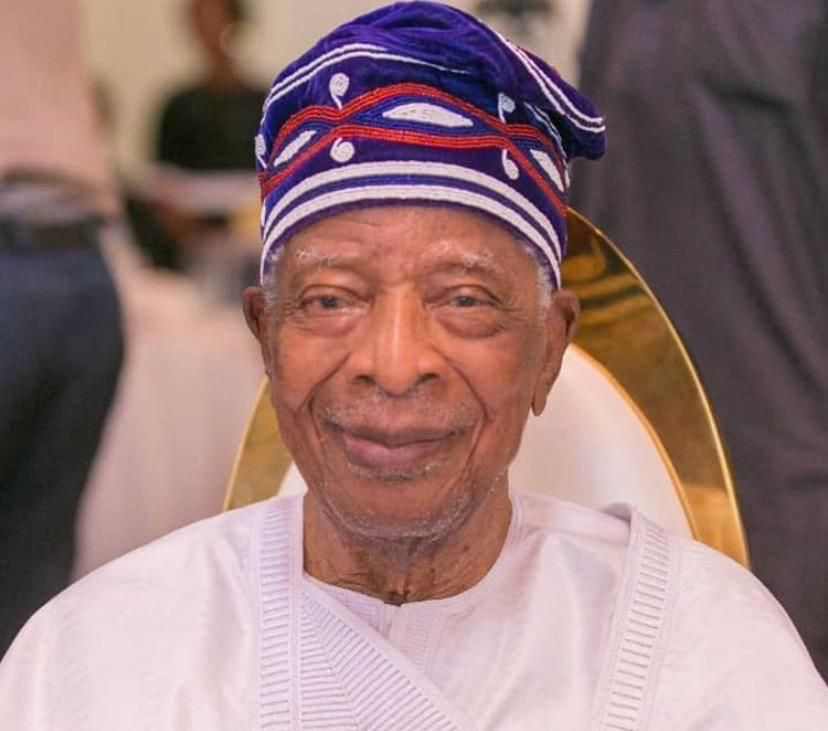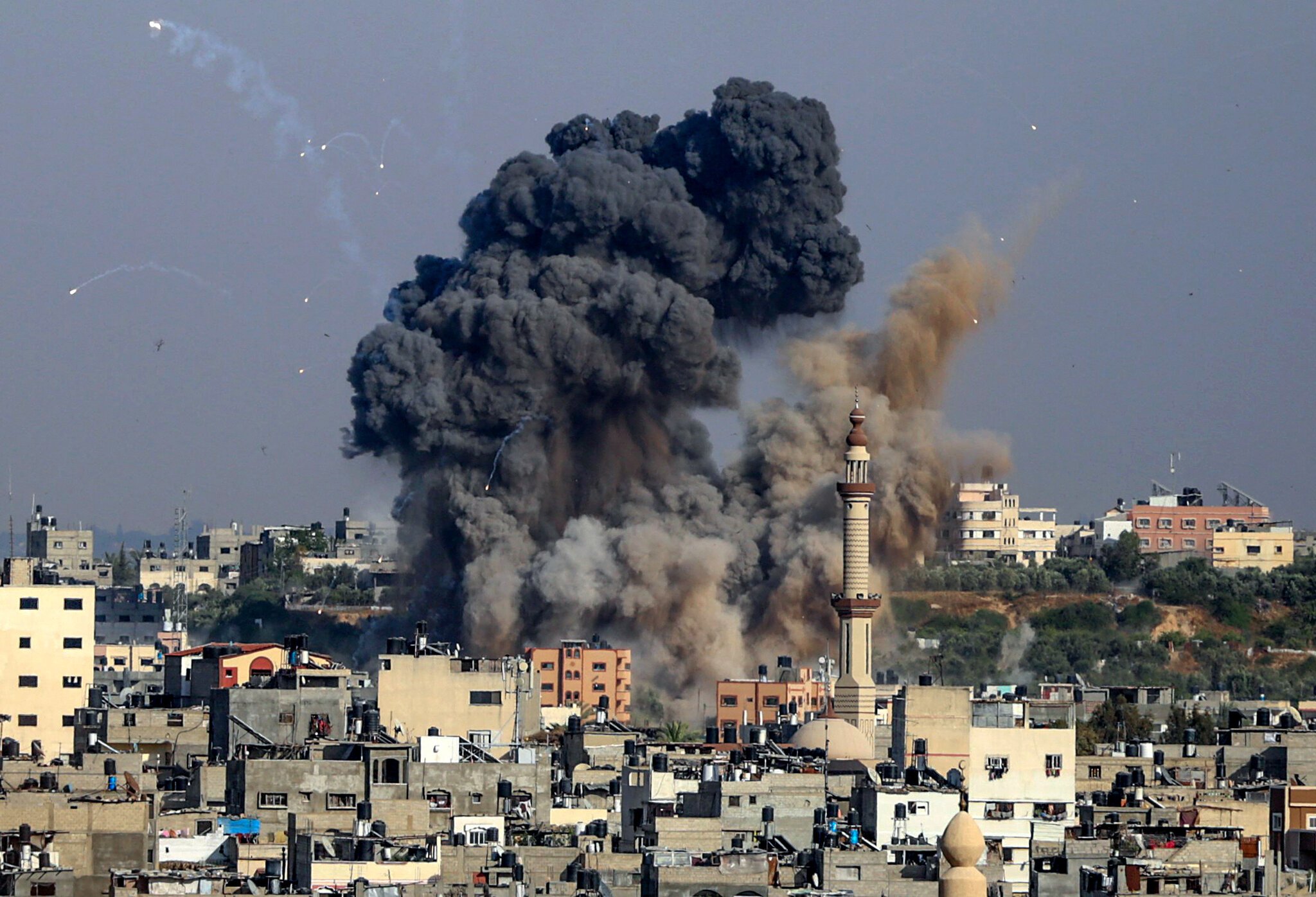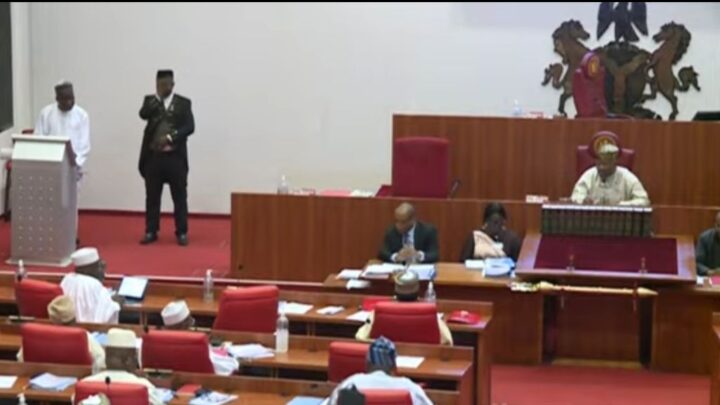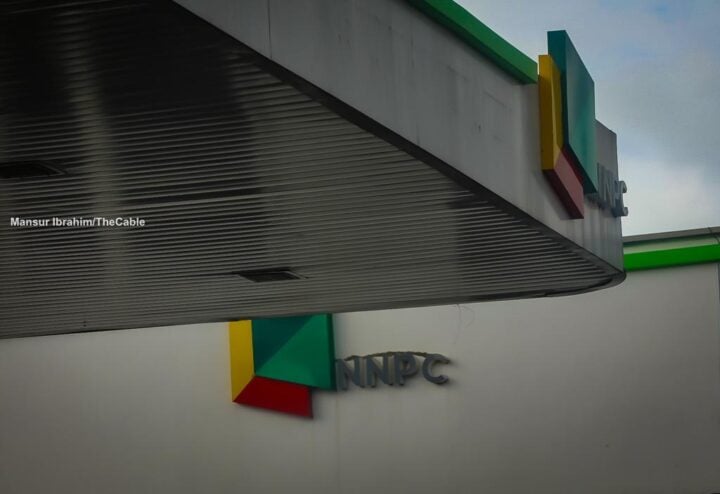Riders disembarking from paddle boat in Otuocha
Joseph Blackson, a 36-year-old father of two, was celebrated as a hero after successfully rescuing about 13 persons during a boat accident along the Port Harcourt-Bakana waterways in Rivers state in July 2018. But he did not live to enjoy the joyous moment his bravery was being celebrated nationwide. He was said to have died of exhaustion while trying to rescue another passenger in the ill-fated boat with 25 persons onboard.
None of the passengers on the boat had a life jacket, including Blackson. Despite the heavy downfall on the fateful day, the driver was said to have lost control of the boat while overspeeding through a sharp bend. It would have been a harvest of tears if Blackson and the fishermen had not come to the rescue.
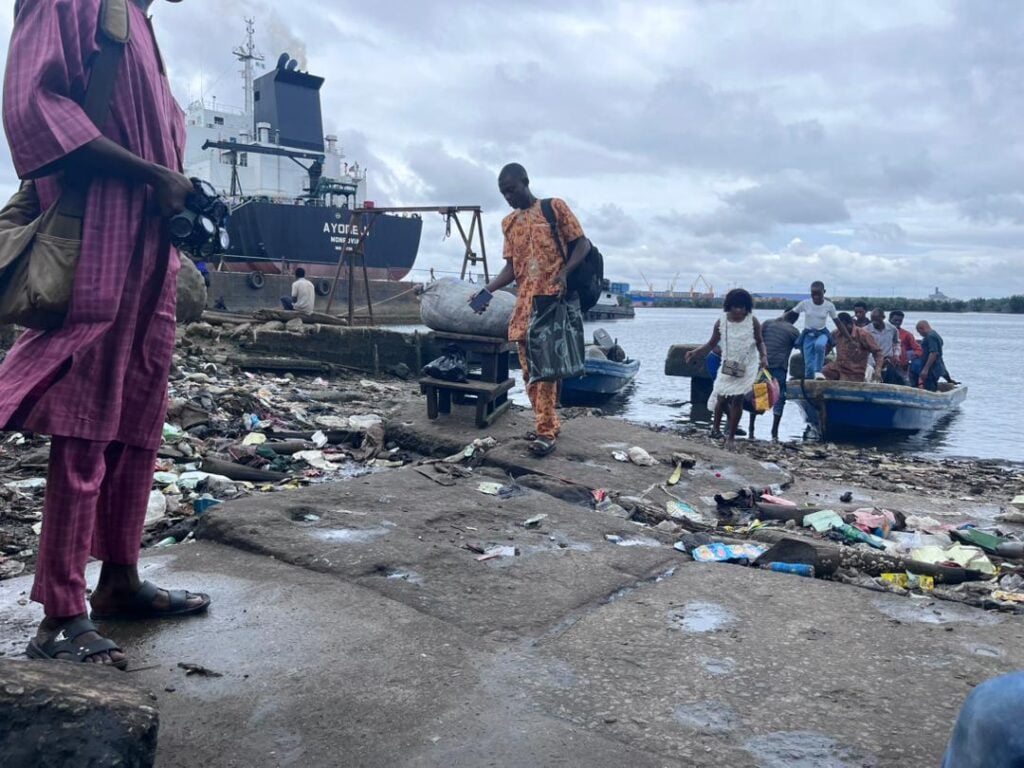
During a visit to the Abonnema wharf on August 13, five years after the ill-fated boat took off from the location, there has been a little improvement. Although there was no strict compliance for the use of life jackets, the boat operators offered the jackets to passengers who asked for them. Aside from the military checkpoint opposite the loading point, there were no officials to enforce compliance with safety guidelines.
Passengers do not have a choice. Most coastal communities in the state can only be accessed through the water.
Advertisement
From the dingy shore beside the wharf where the boats plying Bakana, in Degeme LGA of the state, load their passengers, the journey to the coastal community was frustrating as heavy rain fell all through. With each bend of the motorised boat, passengers held on to the thick tarpaulin serving as cover, or else it would hit the driver at the back and cause an accident.
Abubakar Zana, a Nigerien who had lived in the state for over a decade, was one of the passengers on the boat. He said he doesn’t use the life jacket most of the time when going to Bakana to deliver goods to his brother.
“Why should I fear the water? Even some of the indigenes don’t use it. If the driver is careful, it’s all good. I always pray there won’t be an accident and it has never happened to me,” he said.
Advertisement
Zana is not alone when it comes to the belief that prayer should be prioritised over safety. At the Bille Jetty in Port-Harcourt, there are Christian clerics on standby who mount the boats to prophesy and pray for journey mercy in exchange for money from the passengers.
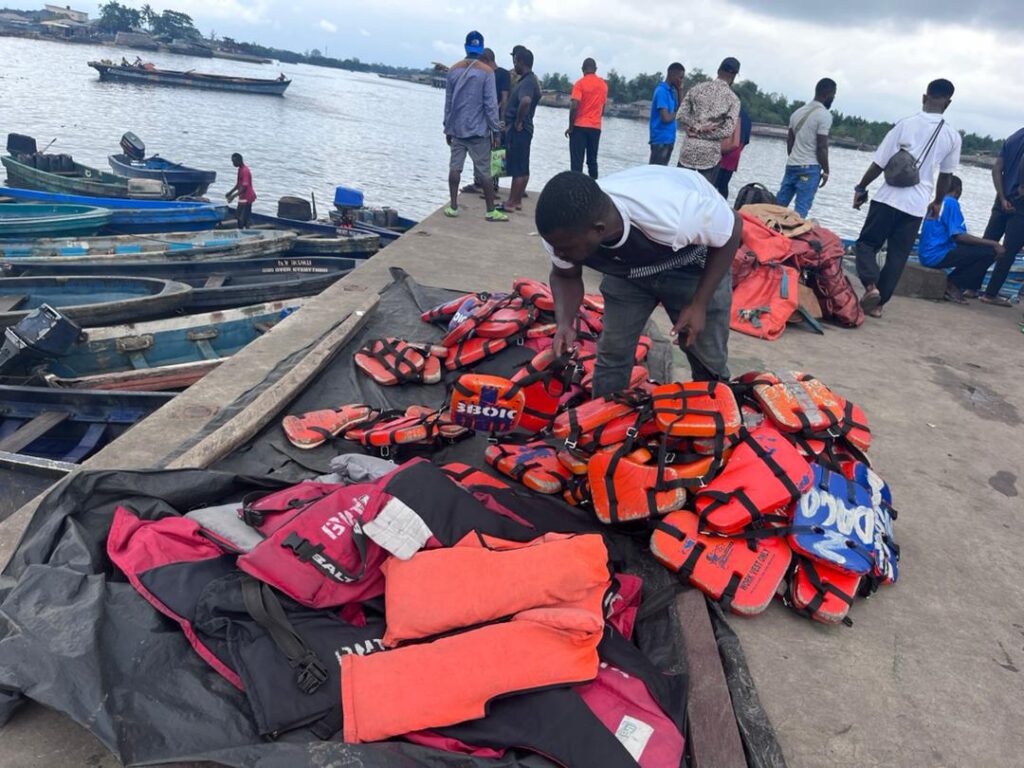
Life jackets were dumped on the floor for interested passengers to pick from. Oga Dogood, the dark robust operator of the boat travelling to Bonny Island, prefers to load the boat with goods, from electronics to construction items; while humans were sandwiched between huge items to be delivered in the Island community.
After the pastor prayed and declared the journey safe, and the passengers handed over their offerings, Oga DoGood collected a bottle of gin from a colleague, gulped half of the content and poured a libation of liquor on the water, the journey through a turbulent sea to Bonny began.
However, the return journey from Bonny to Port-Harcourt was a bit better. The officials at the jetty mandated all passengers to put on a life jacket, while the boat was inspected to ensure there was no overloading.
Advertisement
TESTING THE DEPTH OF RIVER NIGER WITH BOTH FEET
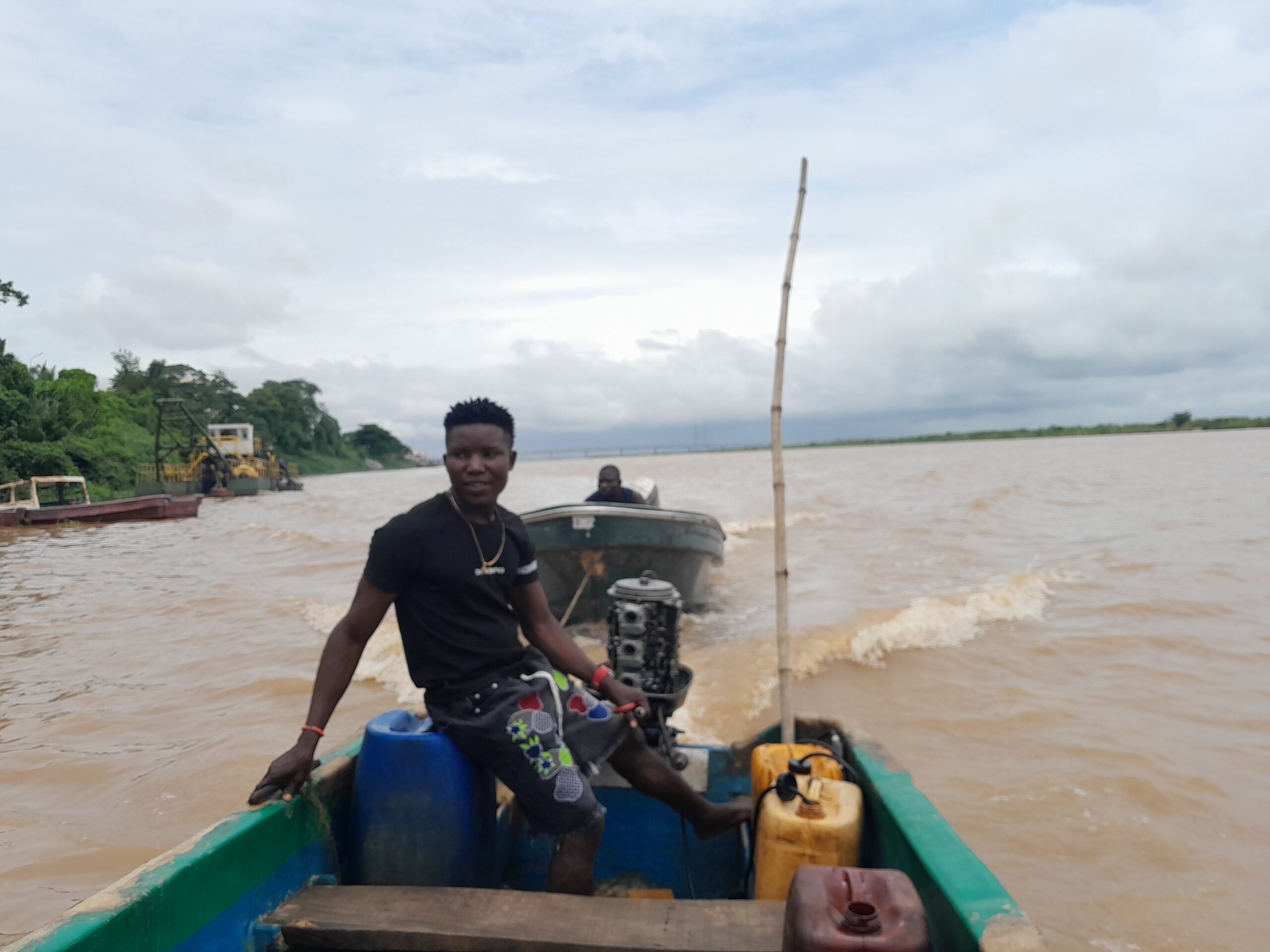
An African proverb says you do not measure the depth of a river with both feet. But the traders living in communities around the River Niger in Anambra and Delta states literally have no choice. With no good access roads and life jackets, they step into rickety boats with their feet to make a living.
Ogbakuba is a remote community hosting Ogbaru LGA’s largest agrarian market in Anambra state, with direct access to the River Niger at its western axis. Traders visit from far and near to sell cocoyam, potatoes, and newly harvested yam dripping wet with mud. A distant view of the market shows a sprawling sea of heads stretching down from a crowded, dirty road towards partitioned stalls with thatched roofs and a rowdy shoreline bordered by docked wooden boats.
Traders in their rain boots beckon potential customers for patronage while buyers stomp through the market’s muddy pathways lined by heaps of tuber crops. Yam sellers, in their daily routine, transport their harvest from surrounding communities to the Ogbakuba market by boat before dawn to begin the day’s sale at 6 a.m., sometimes soldiering through the heavy rain and a turbulent night ride.
Advertisement
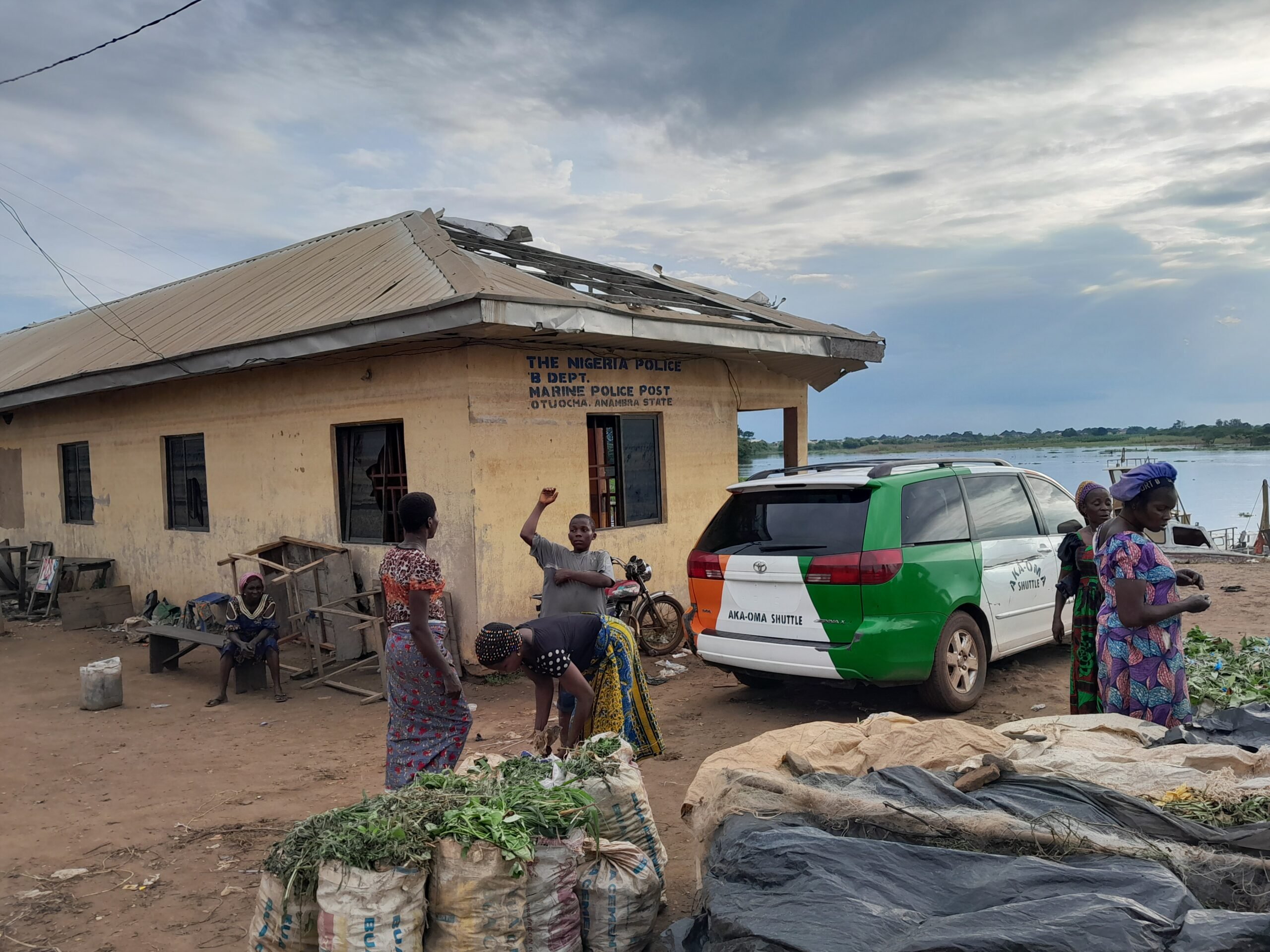
At dusk, whatever is left unsold is loaded back into a 30-foot-long boat for a return trip that frequently ignores safety protocols.
This is the daily reality of Charity Osayi, a native of Ogbakuba whose trade forces her to ride the boats at extreme hours with no life jacket on.
Advertisement
“This is how we’ve been doing it for years,” the middle-aged woman said in her native Igbo dialect. “Some of us set out at 3 a.m., especially those who live farther down in Akili, Ogu-Ikpele, and Anieze communities and lack access to motorable roads. They come by boats, which have sometimes capsized and claimed many lives.”
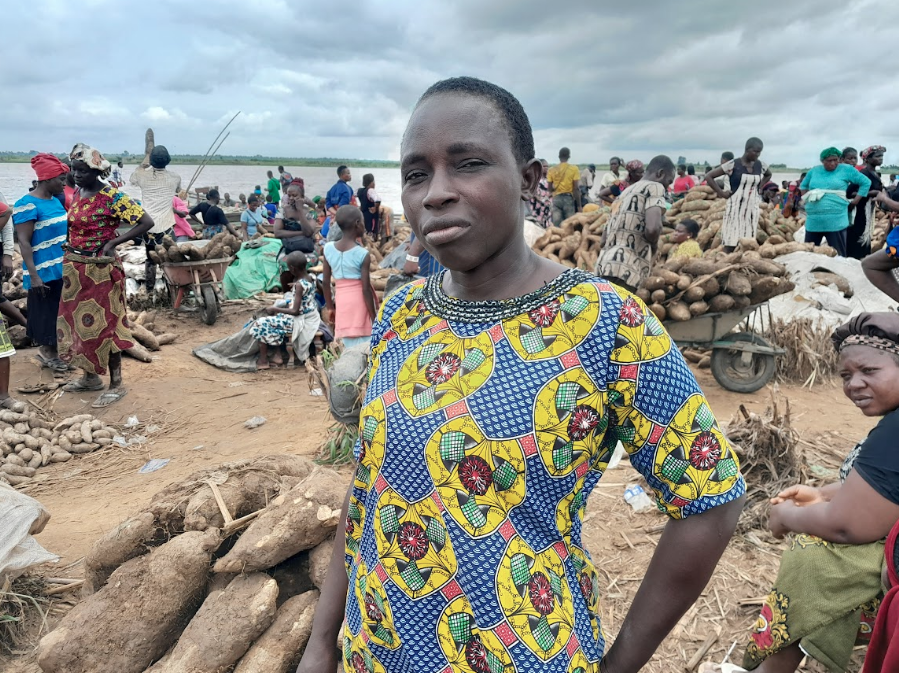
In August 2022, Osayi’s brother-in-law drowned while riding on a paddle boat from his farm alongside his sibling across the Niger to Ogbakuba with a batch of yams for sale. His decaying corpse was discovered only two days later, leaving his widowed wife with seven children to care for.
Advertisement
An analysis revealed that about 701 citizens lost their lives in 53 boat accidents that occurred across Nigeria’s waterways over a space of 34 months spanning the period between January 2020 and October 2022, with Anambra accounting for at least 80 of those fatalities.
Anambra hosts 21 LGAs, operating an inland waterway system mostly within Onitsha South and others in the Omambala River region, which include Anambra West, Anambra East, and Ayamelum. Onitsha South is particularly positioned as a regional hub for trade and logistics in south-east Nigeria and doubles as a major destination for water transport within the Omambala region, from which the state got its name.
Advertisement
The River Niger, on which the Onitsha Bridge is erected, and the Omambala River, its most important tributary below Lokoja, are two major rivers in Anambra, a state where locals residing in the riverine axis in eight LGAs use rudimentary canoes and speedboats for transportation. In these areas, the flouting of safety practices and a lack of regulatory presence have claimed many lives.
A LIFE JACKET IS FOR THE NOVICE AT DELTA’S CABLE POINT
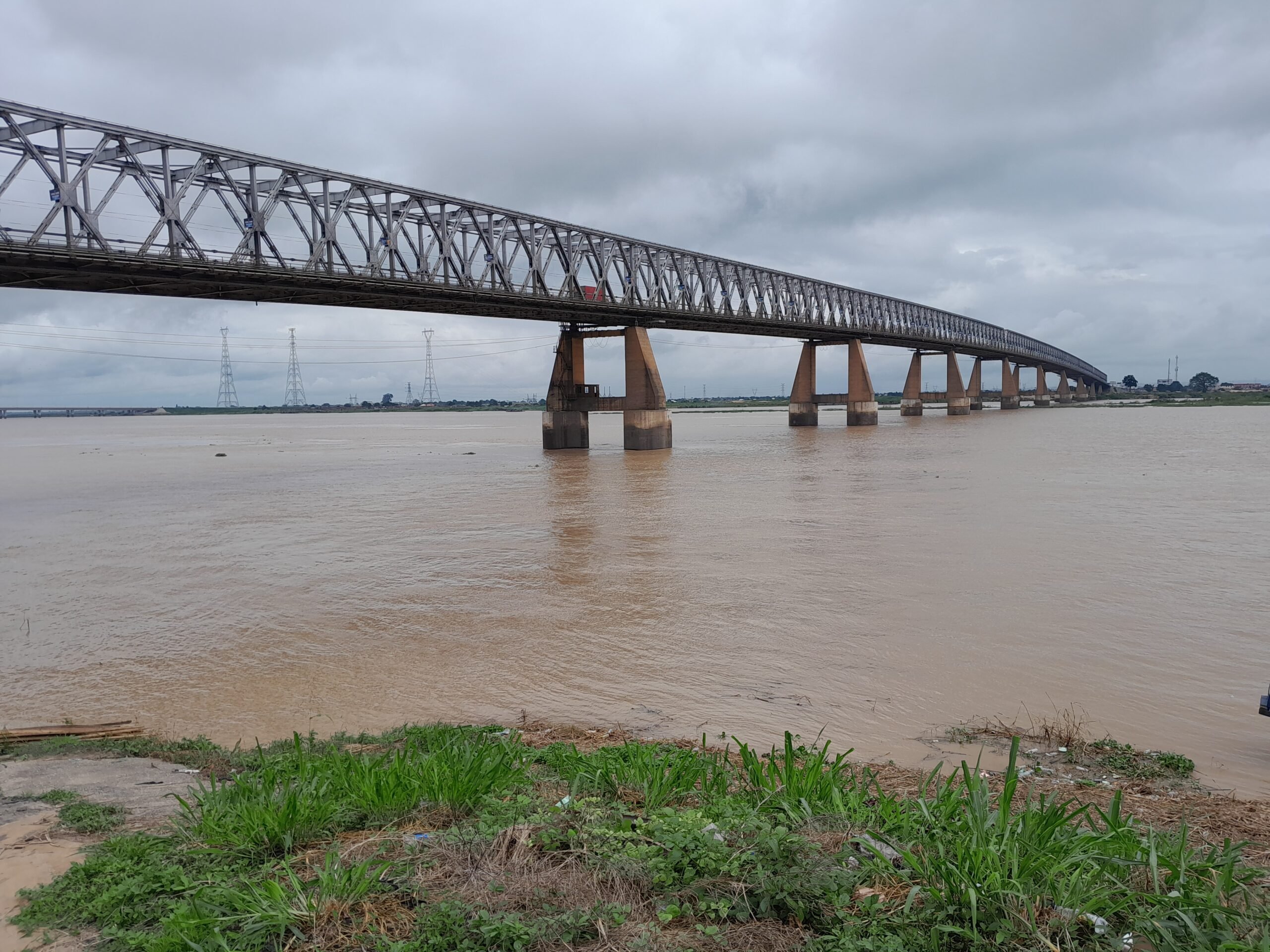
Cable Point in Asaba, Delta state capital, shares a boundary with Anambra. Residents shuttle between the two states by speedboat. It is a quick alternative to beat the infamous gridlock on the Onitsha-Asaba bridge.
A visit to the Asaba end of the river bank on August 2 showed a line-up of fibre boats docked side-by-side with rods. Their operators were loitering around and taking turns to call on passengers waiting to cross the Niger River down to places like Marine, Ose market, Aguleri, Nsugbe, and Anam in Anambra. Most of the boats had conspicuous patches from repeated damage and repair; some were even leaky.
The ferries had four wooden crossings, each meant to host three seats. The wooden crossings appeared fragile and worn out from constant moisture. Aboard one of the speedboats shuttling to the Marine Police axis of Onitsha South, the reporter requests a life jacket, but the operator, in a tone underplaying the need for one, points out that he had none.
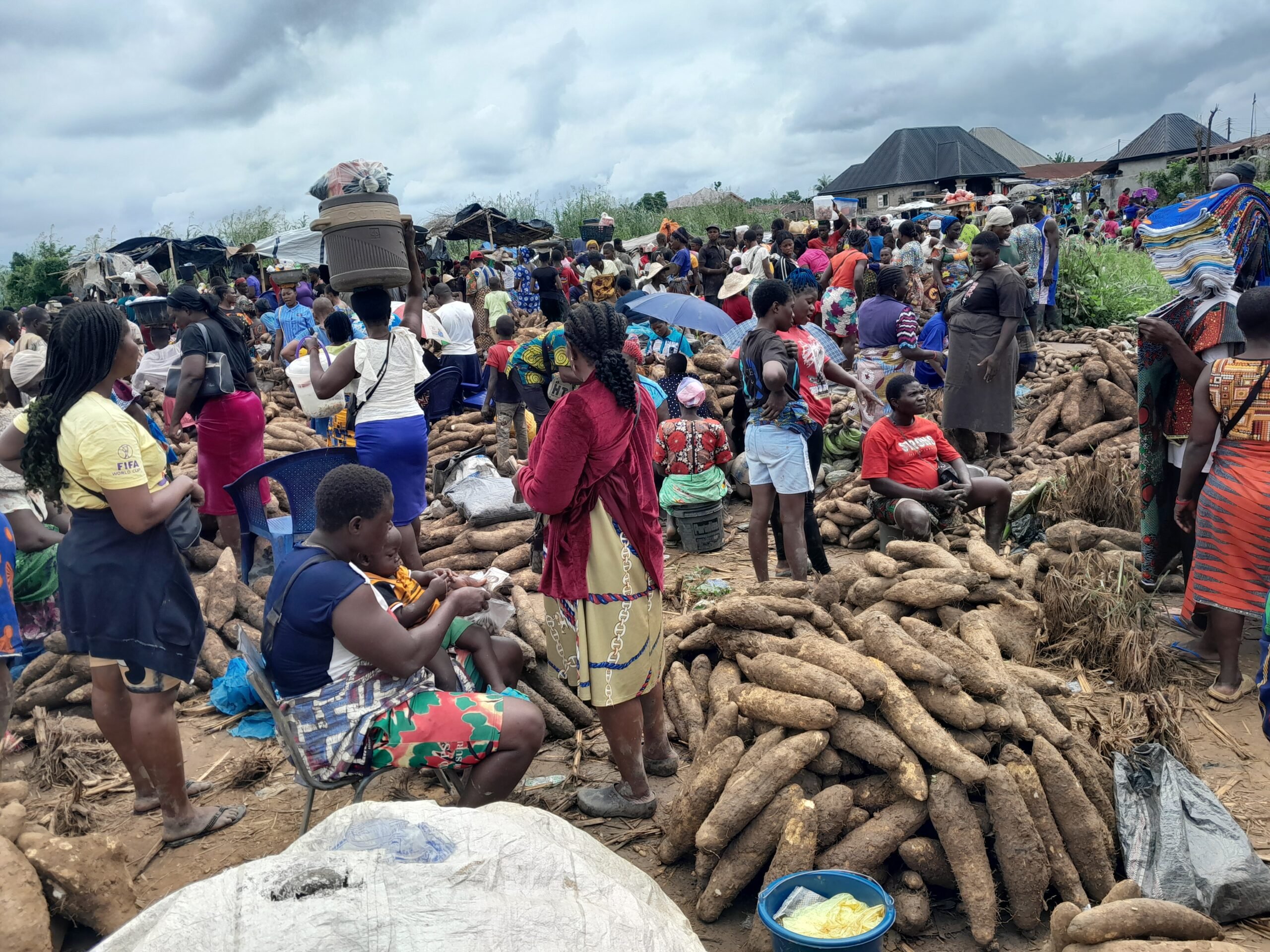
“It is just about us riding carefully,” he dismissed reassuringly with a twisted smile, puffing a whiff of smoke from the blunt tucked between his index and ring fingers.
The rider’s insistence on getting one would make him the only person with a life jacket on a ferry of 13 passengers, excluding the boat operator. It would seem as though wearing a life jacket, scruffy and worn out as they often appear, served more to indicate that the rider is a first-timer than it was perceived to be of any safety value.
Before the trip, four riders were made to disembark as the operator held up a detached engine blower, muttering something about the machine being too weak to convey the usual 13 people. “We use it even for up to 15 people,” a colleague of his protested in Igbo, pushing his boat off the bank.
The passengers were everyday people; students accustomed to boat rides, traders running errands, and stout market women in their damp headgear out for the day’s sale. It was a quick trip. Most didn’t demand a jacket, and the operators never offered one as the boat darted across the brown vastness of the Niger.
FAULTY ENGINES…FLOATING AWAY IN THE DEEP
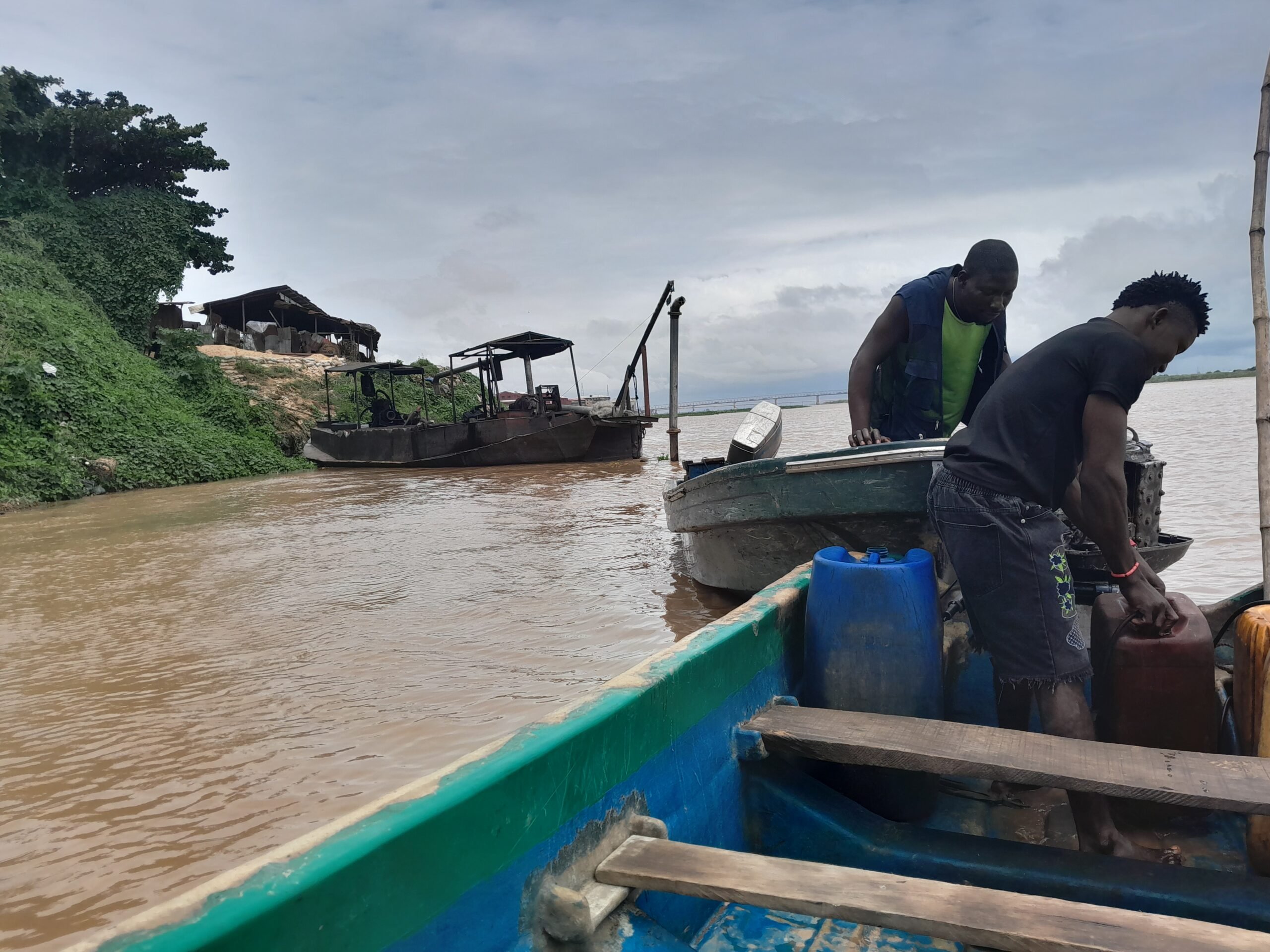
On the shoreline of the Anambra waterway along Marine road in Onitsha South is another market where women go in droves to sell their new harvest. They come in a large wooden boat, with a size around 40 feet in length and about 15 feet in width. The boats glide to the Marine at dawn and back to Asaba and its associated enclaves at dusk, conveying tons of goods or people, and most times both.
Ose is another axis of the shoreline that hosts another teeming market where traders buying non-agro goods from parts of Onitsha South and North come to transport their wares across the Niger and Omambala rivers. Sweaty men trudging in the mud on bare feet loaded goods into the boat all day for a night trip. One of such engine-powered boats loaded about 35 people in addition to goods of various sorts covered with a large tarpaulin blanket to shield it from the coming rain. The smaller speedboats were also in sight.
Innocent Uchene, a boat operator, received a call to tow a colleague’s boat whose engine got damaged mid-river.
The boater towed the damaged vehicle back to the Marine where another colleague was similarly battling a faulty engine giving off heavy billows of smoke as passengers onboard disembarked in disappointment.
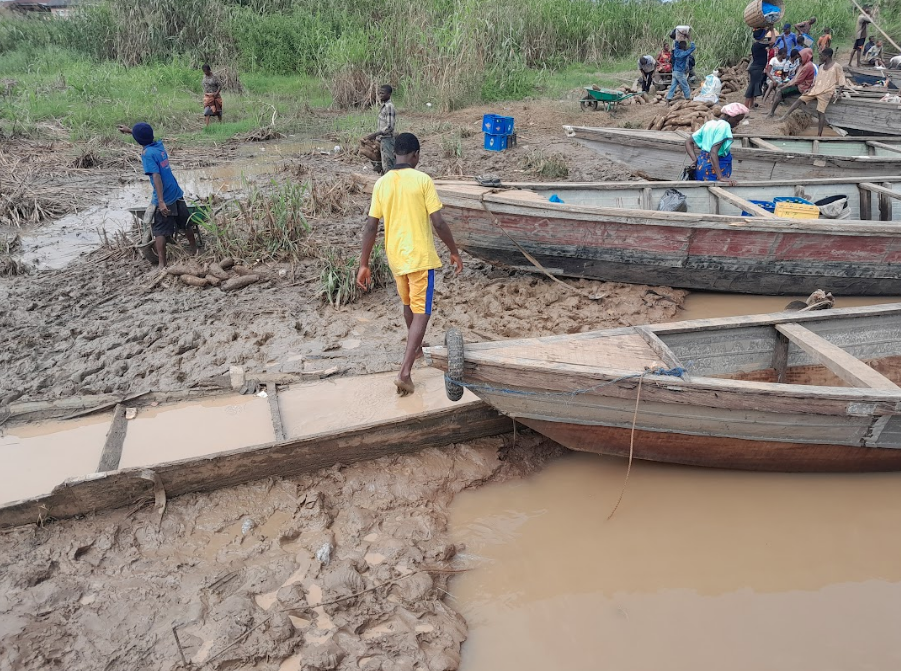
Another operator, with nine passengers aboard, pulled along the boat and darted across the Niger river but the towing rope snapped mid-river. The rider, fondly called Aboy, doubled back twice in an attempt to reconnect it, but he crashed into the damaged boat on the second try as his engine also jerked to a halt in the deep, leaving the passengers complaining.
Conversations with the boatmen revealed that big boats can take about 100 passengers if they ride without much luggage, while the smaller speedboats take up to 13-15 riders.
Far from Onitsha is Ogbaru LGA which was marked as “flood-prone” in 2022 due to rising water levels and proximity to the Niger river. This makes safety talks for water transport in the area critical. In October 2022, 76 boat riders were killed after a ferry carrying 85 passengers capsized in the LGA. Most of the victims were women and children trying to reach safety after their community was inundated by flood.
Media reports revealed that those aboard the boat were heading to Nkwo market in Ogbakuba before it capsized. Officials narrated that the boat suffered an engine failure, floated away, hit a bridge, and went under.
THE TOUGH ECONOMICS OF WATER SAFETY
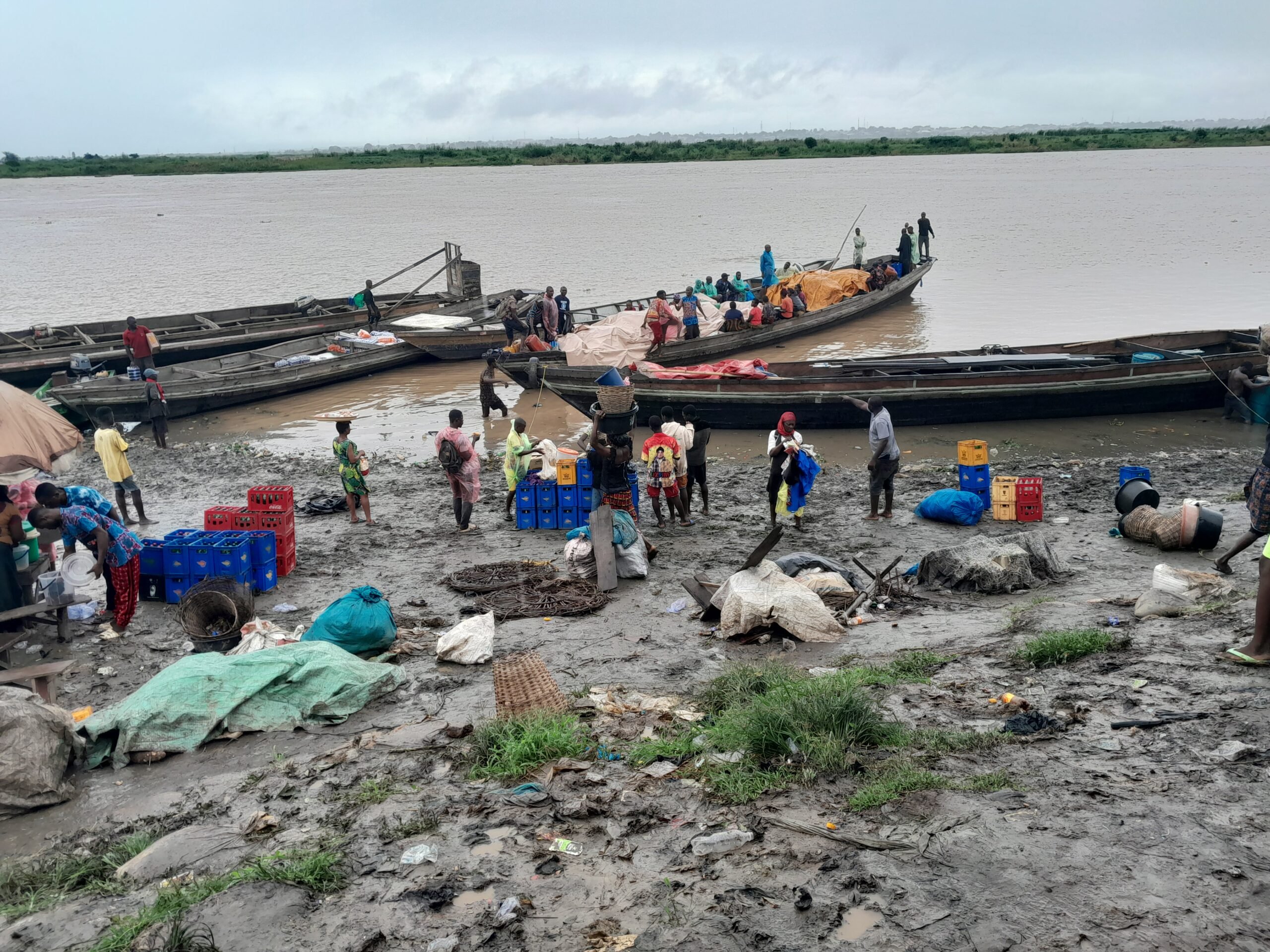
Inflatable life jackets are sold for around ₦15,000 to as high as ₦50,000, depending on their quality. The local ones with cotton straps and safety pads made of floatable styrofoam material go for around ₦7,000. This means that a mini boat with 15 passengers should readily have 15 life jackets available for use at any time, amounting to a conservative cost of ₦105,000.
An empty speedboat, one of the operators said, could cost up to ₦1 million and the engine ₦3 million. To put a rudimentary engine-run passenger boat on the waterway could cost around ₦4 million in total or more for the brand-new all-in-one speedboats.
To keep costs down and ensure the hustle is viable enough to break even, the boaters make do with old vehicles and engines. They also have to deal with low patronage during certain periods of the year, which sometimes keeps riders waiting for over an hour before all seats are occupied for one trip.
The Onitsha-Asaba route, for instance, costs ₦1,000 per trip, with a trip of ten passengers amounting to ₦10,000, which could be all a boater would make for a day in the event of low patronage. There is also a system of profit sharing where a transporter owns a fleet of boats and hires boaters to operate them. In such cases, a day’s earnings of ₦6000 is split into three, each accounting for the boat owner’s share, the vehicle maintenance share, and the operator’s share after ₦4500 is removed for six litres of petrol that make a trip.
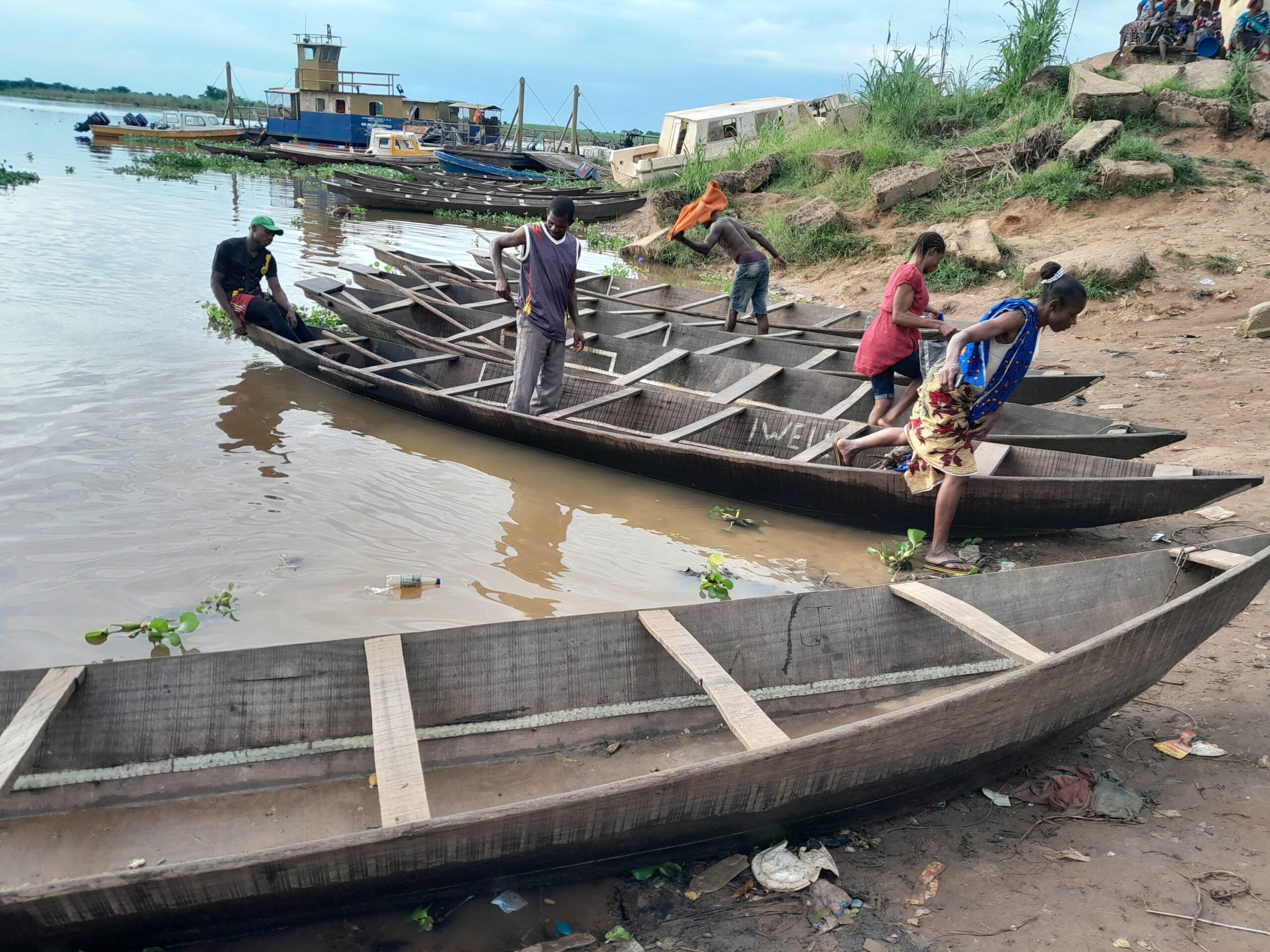
Boaters in Anambra mainly interact with state officials through the National Inland Waterway Authority (NIWA), which regulates waterway transportation for safety, and the marine police, which is in charge of security.
“NIWA officials come once every two weeks. When they too realise how expensive jackets are compared to how much we earn, they simply issue a warning and let us be,” Uchene, who operates a small speedboat, said.
At Ogbakuba lies a similar story. Obinna is a native of Uchi in Delta state. He operates one of the large wooden boats with two of his colleagues to transport traders and their farm products like garden eggs, pumpkin leaves, pepper, and cassava. From Uchi, he sets out early in the dark. His brother mans the engine; he keeps watch for possible waterway obstructions at the rear of the boat, while a third person rests, getting set to take the reins from any one of his colleagues who becomes exhausted. The boat workers ride through the recurring rain, sometimes appearing sleep-deprived and fatigued during the daytime.
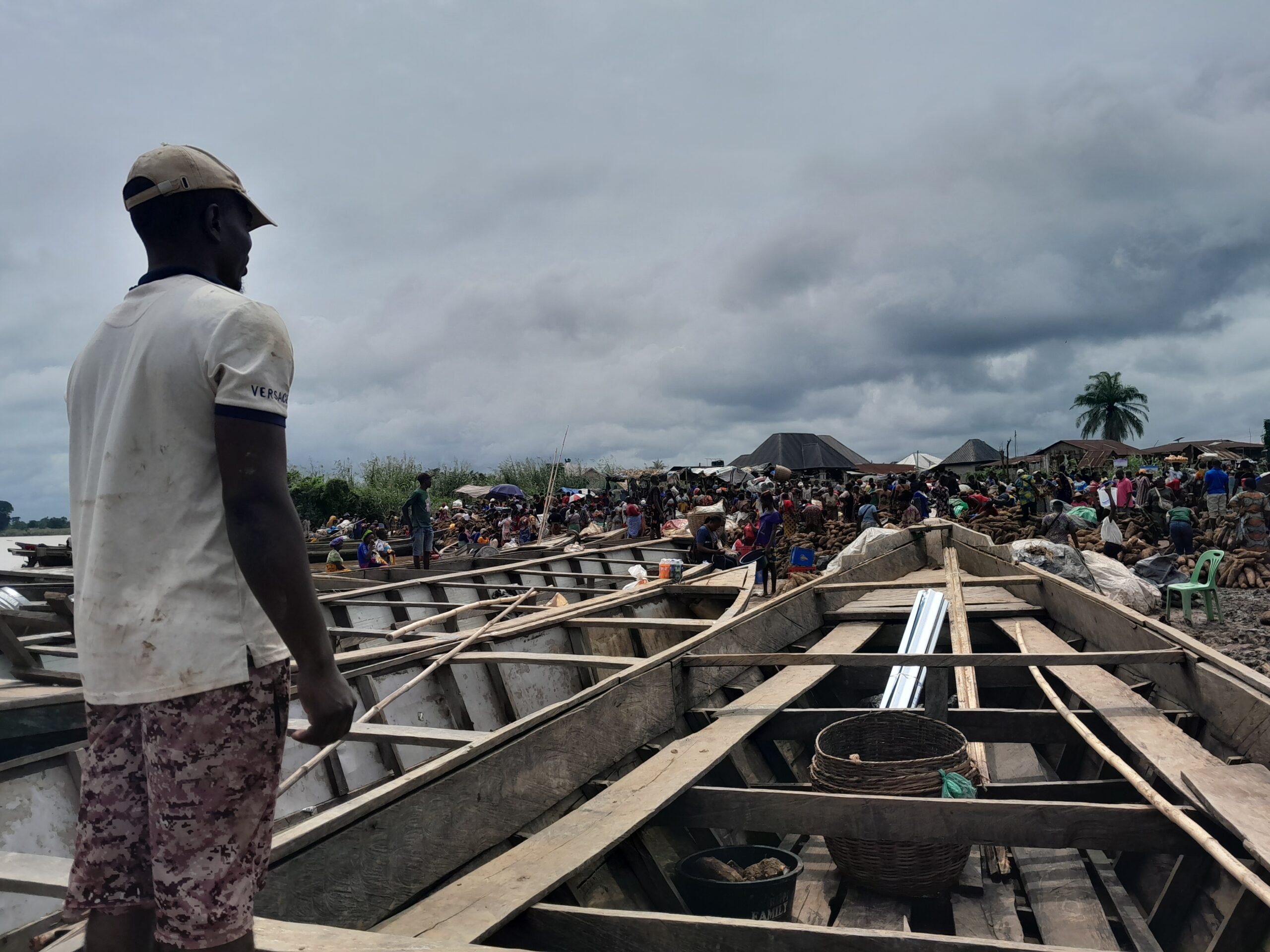
“The waves can be strong and the cold unbearably harsh on rainy nights, leaving passengers shivering. There is no life jacket in case things go wrong because it is too expensive for us,” Obi said.
Obi and his team need up to 40 life jackets, which will cost about ₦280,000 to procure.
“The high currents spare no one. It’s not about being able to swim or being an expert boat operator,” he said.
Many of Anambra’s waterways are lacking in infrastructure, the most notable being the access points to the river banks where these boats are boarded. Some are very steep, putting potential riders at risk of tripping off. Others are swampy, where riders have to dip their feet into the mud to get aboard. There are no piers for ease of access to some popular routes.
EXTORTION, WEAK REGULATORY PRESENCE
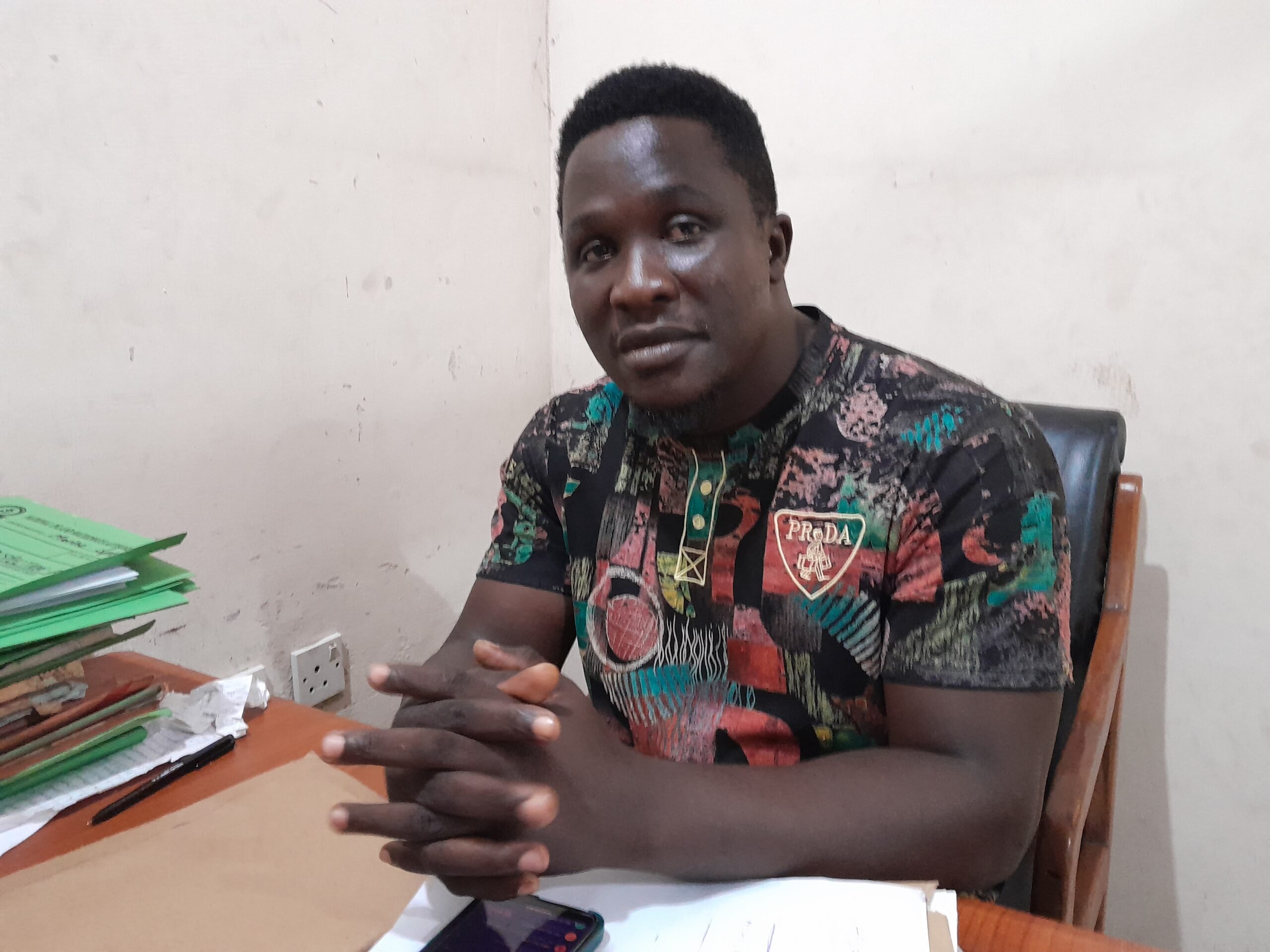
NIWA is meant to maintain regulatory, economic, and operational oversight of Nigeria’s inland waterway system. The agency was created to “develop infrastructure for an efficient intermodal transportation system in line with global best practices that are safe, seamless, and affordable.” But a tour of Anambra’s river banks revealed no serious regulatory presence that should be ensuring safety compliance among the boaters.
The NIWA Act also does not stipulate generalised safety regulations guiding privately run commercial boat ferries, especially around such areas as what amounts to overloading for what kind of boat. It also fails to specify what time of the day such boats are allowed to operate and what levies are payable. This is so that boat operators say they pay ₦1000 each to the marine police on a weekly basis, with no purpose stated.
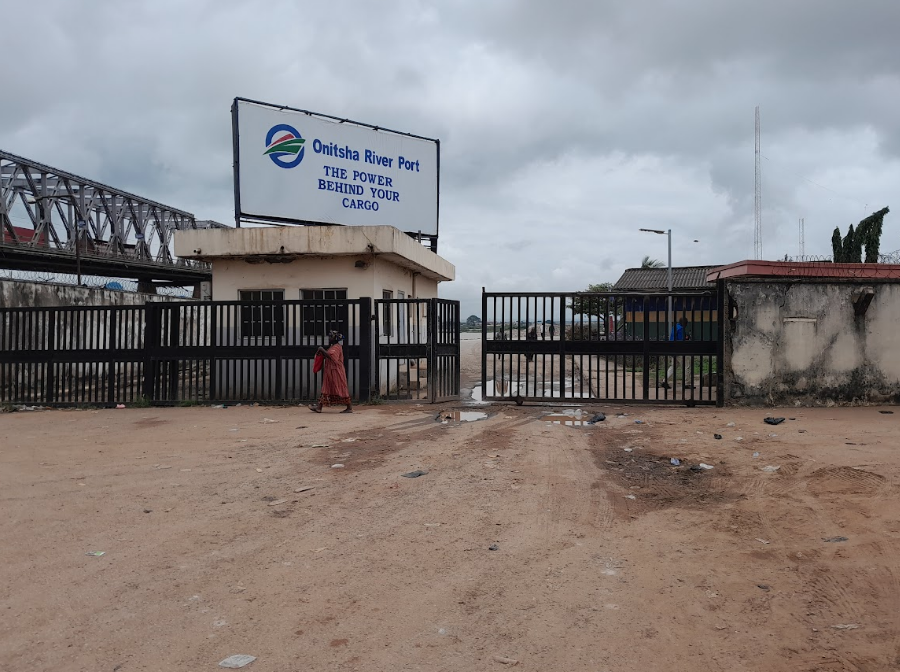
Muhammed Alausa, the chairman of Asaba boat operators, said the union collectively “settles” the marine police at intervals to guarantee their safety. But the Anambra police denied the existence of such fees.
On enforcing safety compliance, John Omisola, the manager and unit head of marine at NIWA’s Onitsha office, said the authority has had to halt operations across Anambra’s waterways on several occasions.
“We do patrols and sensitisation. We tell them to avoid sailing at night. We give them safety protocols. But some operators are adamant, and we are not always there. What operators do is left to them,” he said.
Omisola said NIWA inspects and certifies the boats, prescribing a unique draft standard that determines what overloading is by fixing a limit on the level to which a particular vessel is allowed to be submerged. Asked how the Onitsha area office is looking at 24/7 regulatory presence, given that existing efforts at enforcing compliance have failed, Omisola spoke of a task force that has mostly not solved the problem.
THE DEAD LIVES IN THE DATA
Things are not getting better. Just this year, 15 children drowned and 25 others were missing when a boat capsized in a river in Sokoto on May 10.
Twenty-four hours earlier, eight persons were said to have died in a similar accident in Gusau, Zamfara state.
On June 13, more than 106 people died in a Kwara boat accident while on the 26th day, three students from Calabar state died in another boat accident.
On August 24, 12 people died in a boat accident at a river — Kogi Kungra Kamfani — in Arikiya, Lafia LGA of Nasarawa
Also, 15 were confirmed dead in a boat accident on September 9 and another 11 died two days later.
On September 10, 24 persons also died while over 30 people were rescued after a boat capsized in Gbajibo, Mokwa area of Niger state.
Accidents on water ways happen more frequently than it is being reported in the media as most of the local communities are far off. Behind the data of the incidents you read are human lives, precious souls snatched from the world in situations that are avoidable with good regulatory enforcement.
When contacted for official comments on the story, Atugege Joshua, principal manager survey at the National Inland Waterways Authority (NIWA) headquarters in Lokoja, Kogi state, told TheCable that he cannot comment without an approval from the agency’s chairman.
Joshua, who presented himself as the mouthpiece of the agency, said he would get an approval and call back to answer questions. Subsequent calls were not returned.
REPORTING BY SAMAD UTHMAN, TUNDE OMOLEHIN, JAMES OJO, STEPHEN KENECHI AND TAIWO ADEBULU
This is a special investigative project by Cable Newspaper Journalism Foundation (CNJF) in partnership with TheCable, supported by the MacArthur Foundation. Published materials are not the views of the MacArthur Foundation.
Add a comment
